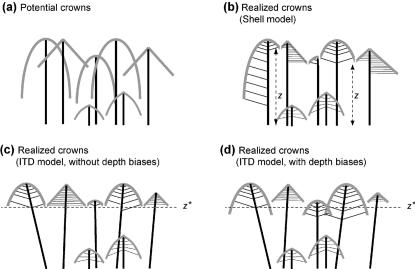Figure 1. The ITD model, which is spatially implicit, can be derived from the Shell model (a, b), a spatially explicit model that predicts canopy structure from the size and species of individual trees in a stand ([26], [27], and see Strigul et al. in review).
In the Shell model trees drop shaded foliage, which trims the potential crowns (a) to produce a set of tessellating realized crowns with variable join heights Z (b). Under this scheme some trees are predicted to have no crown area, corresponding to understory trees that must be dealt with separately (two smallest trees in figure). The ITD model assumes that, through additional growth plasticity (e.g. angled trunks, as shown) all join heights Z become equal to a constant value Z * (c). The version of the ITD model presented in this paper includes a species-specific depth bias Vbias,j such that trees of species j trim their potential crowns at an effective join height Zˆ = Z *+Vbias,j, illustrated in (d). With or without this bias, the value of Z * can be found rapidly, requiring orders of magnitude fewer calculations than the spatially explicit Shell model. In (d) two canopy trees are drawn overlapping in the understory. The ITD makes the assumption that growth plasticity is sufficient to avoid any such overlap, but it is spatially implicit and so does not specify how this would be achieved in a given stand.

